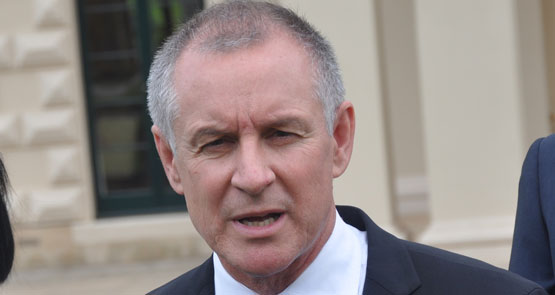
There are plenty of things that could cost South Australian Labor the next state election.
The nation-leading (in an egregious kind of way) unemployment rate springs immediately to mind.
The “It’s Time” factor after what will then be the best part of two decades in office.
The overbearing sense of an economy plodding along while the state government haggles for cash with the federal Coalition.
Any of these things — and many more — could cost the Weatherill government power in 2018.
But the single biggest factor that will affect Labor’s political future is currently playing itself out in a Commonwealth court room — and hardly anyone is covering it.
Which is odd, because the Electoral Districts Boundaries Commission review is really “peak SA politics” in a state with a penchant for nostalgia and obsessed by its own recent past.
The commission’s regular post-mortems allow us to collectively — and, for many, ruefully — reflect on elections past and consider the vagaries of fate.
For in the past generation there were probably only two polls — in 1993 and 2006 — that could not conceivably have played out any other way. And thus, the boundary review has Labor insiders and marginal seat holders quaking in their proverbial boots — as it should.
As political academic Professor Clem Macintyre — who gave evidence to last week’s hearing — points out, a few hundred votes in a seat such as Newland, or Colton, or Elder (where the ALP ran one of the ugliest smear campaigns in recent SA memory) would have changed the political landscape. And, likely, changed history.
In a 47-seat parliament, the Liberals finished with 22 seats to Labor’s 23, with two independents tasked with picking a side. We all know the roller coaster of grim circumstance that followed, with Bob Such’s illness, absence and eventual passing, which left Geoff Brock little choice but to opt for political stability.
The Libs had a commanding two-party majority. Labor had more seats.
And there’s the rub.
If that 23-22 split had gone the other way, the case for a Marshall government would have been watertight. Geoff Brock would have been convinced.
But it didn’t. And he wasn’t.
And here’s the rub for the boundaries commission: how much of the Liberals’ failure should be attributed to its own glaring campaign shortcomings, and how much is due to electoral boundaries that favour the ALP in a glut of metropolitan marginals?
Indeed, how can it be determined to what degree a boundary aids one party or other? On the basis of voter behaviour at the previous election? But what if those same voters that backed Labor in 2014 have now decided — because of nation-leading unemployment, the meandering economy and the “It’s Time” factor — to cast Weatherill aside?
Uniquely in SA, the commission is charged with redistributing the electoral boundaries with an eye to “fairness” — ensuring as best as possible that the party with a statewide majority forms government.
The problem, as has been widely countenanced, is that “as best as possible” is hardly possible at all.
Previous commissions, though, have largely rejected any impetus for wholesale change. In 2012, after the Liberals lost more comfortably despite an almost 52-48% two-party majority, the boundaries review determined that “the Commission has no control over, and can accept no responsibility for, the quality of the candidates, policies and campaigns”.
*This article was originally published at InDaily.








Why should the sleep of Politicians be less disturbed than that of the Capitalist media enterprises which help them hide what’s done during the waking hours?
Will Weatherill still be there come next election time?
If anyone needed evidence of Labor’s rank opportunism, technological bankruptcy, and modern-day failure to advance this country, they can find it in Weatherill’s openness to the radiation waste dump.
EnQ – but, but,… it’s not a dump according to him on RN tonight, it’s a hi-tek facility.
A slogan for the 21stC, “give us your multimillenia radioactivity, your cash and we’ll prete3nd to keep it safe.”.